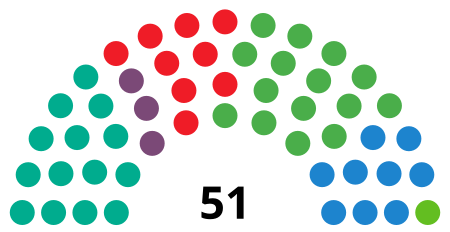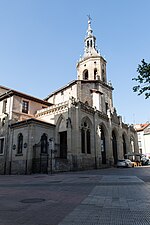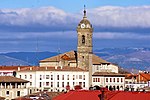General Assembly of Álava
Basque cultureBasque historyLegislatures of the Spanish Autonomous CommunitiesLists of legislative speakers in SpainPolitics of Spain ... and 1 more
Álava

The General Assembly of Álava (in Basque: Arabako Batzar Nagusiak, in Spanish: Juntas Generales de Álava) is the parliament of Álava, a province of Spain and a historical territory of the Basque Country. The General Assembly is integrated by 51 members for a period of four years. The General Assembly meets at the Province Palace in Vitoria-Gasteiz.
Excerpt from the Wikipedia article General Assembly of Álava (License: CC BY-SA 3.0, Authors, Images).General Assembly of Álava
Probintzia plaza/Plaza de la Provincia, Vitoria-Gasteiz Lovaina
Geographical coordinates (GPS) Address Nearby Places Show on map
Geographical coordinates (GPS)
| Latitude | Longitude |
|---|---|
| N 42.847219444444 ° | E -2.6755611111111 ° |
Address
Arabako Foru Aldundia/Diputación Foral de Álava (DFA)
Probintzia plaza/Plaza de la Provincia
01001 Vitoria-Gasteiz, Lovaina
Autonomous Community of the Basque Country, Spain
Open on Google Maps











